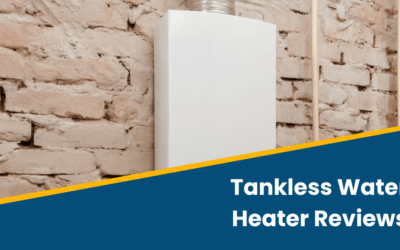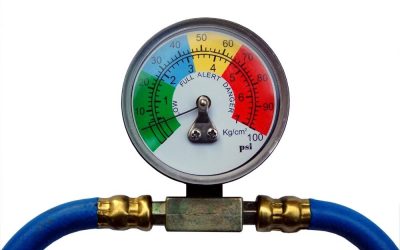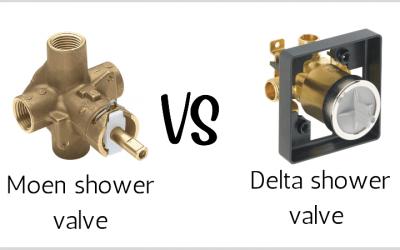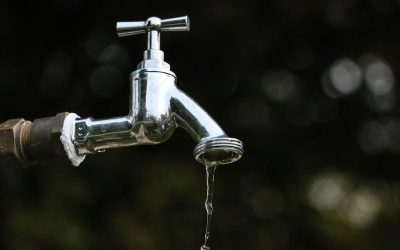The signs of your water pressure being too high could appear in many ways throughout your home. Maybe you have a tap that is leaking from the handle when turned on or perhaps you have noticed a small leak in the pipe behind your washing machine.
While you may think that these are small one-off plumbing problems, it could all be pointing to the larger issue of the water pressure reaching dangerous levels in your home.
The pressure being too high in your water meter can cause several problems that are not only dangerous to your home but may also be life-threatening to all who live there.
It could make the water leak through seals around pipes, damage fixtures, burst pipes, or in extreme cases even make the water heater explode.
Here is everything you need to know about high pressure in your water heater.
What Causes Too Much Pressure?
In a hot water heater, too much pressure builds up when the supply of hot water is reduced or the temperature of the water is too low.
When the temperature starts to rise because of a low flow or the warmer temperature outside, the pressure builds up due to the pull of gravity and the decreased air pressure in your home.
Pressure also builds when the temperature of the tank is set too high. The ideal temperature for these heaters is 120-125 degrees, though if you want it to be hotter then make sure you don’t set it above 140 degrees.
Remember that the higher the temperature the more chances of the water damaging your home, as well as more chance of you getting injured or scalded by the water, so it’s best to keep the temperature lower.
To try and prevent this from happening, all water heaters are fitted with a Temperature and Pressure Relief Valve.
What is a Temperature and Pressure Relief Valve?
T&P valves are there to make sure that your water heater does not explode due to the pressure.
A temperature and pressure relief valve opens in two scenarios. The first is the temperature issue. When you switch on your water heater, cold water is poured into the tank and warmed by a heating element.
After that, the hot water pipe transports it throughout your home. It’s an easy-to-understand design. Things do, however, go wrong from time to time.
The temperature of the water in the tank may occasionally reach dangerous levels. In this case, the temperature and pressure relief valve open, allowing cooler water into the tank and decreasing the temperature.
When the tank is under too much pressure, the T&P relief valve also opens. As the water heats up, it expands.
Typically, water heaters are set to hold around 150 PSI (Pounds per Square Inch). If the pressure inside the tank goes above this level, then the pressure relief valve will open until all of the extra pressure is released.
Homeowners that fail to test their T&P valves put themselves at risk. A homeowner should inspect their T&P valve every six months to see if water can exit the tank through the valve or if there is too much corrosion.
T&P valves should be replaced every 5 years to maintain a free outflow for additional hot or pressurized water. If homeowners don’t test their valves, a water heater could become too pressurized, have no way to remove that pressurized water, and explode.
How to Test T&P Valves
Testing T&P vales is super easy and will only take a few minutes. First locate the valve, which can be found on either the side or top of the water tank.
Then turn the valve for 5 seconds to check if it can release water. Make sure you have a bucket below you to catch this water and try to avoid touching the water as it will be hot.
Signs that the water pressure is too high
While the symptoms of high water pressure can just look like simple plumbing issues, there are a few key things to look out for if you think water pressure might be an issue.
Loud Appliances
If you are suddenly noticing that your washing machine or dishwasher is making a lot of noise, then these are all signs that you may have a problem with low water pressure.
This is because the seals and mechanical components that make these appliances work wear out faster when they are pressured to compensate for increased water pressure.
As a result, it can cause lower noise, more strain, and a shorter lifespan for your appliances.
Banging or Loud Pipes
You will normally never hear your pipes moving water around your home. But if you one day flush your toilet and hear banging, clanging, or other loud noises in your walls, this is another sign of pressure issues.
The noise is a sign that the pressure in the pipes was already far too high, and when you use to water the noise is the sound of your pipes trying to adapt to even more pressure being added.
This could also mean that you are about to experience a leak or a burst pipe. If you notice any of these sounds in your home, you should call a plumber for leak repairs right away.
Low Levels of Hot Water
Your water heater is set up to take in water at a certain rate to supply enough water to your home. It is also supposed to keep that water at a constant temperature until the tank is empty.
If the water pressure is too high, then the tank will fill up too fast with cold water as the tank cannot bring it back up to that constant warm temperature fast enough. This will make it seem like you are running out of warm water much faster than you should be.
Takeaway
If you notice any of the above issues in your home, do a T&P check to see if there is too much pressure in your water tank. If there is then you should call a plumber as soon as possible.
Having a water tank that is too pressurized can be very damaging to your home and possibly dangerous to you, so you should try to solve this issue as quickly as you can.







